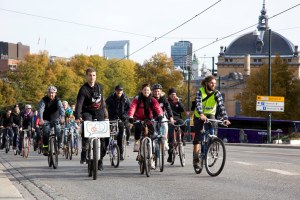How the Bicycle Access Ramp is helping reduce emissions.
By: Andy Lambert, Global Sales Manager

From the bush fire in Australia to the flooding in Venice, the impacts of the global climate crisis are being realized before our eyes. Greta Thunberg’ s book uses the title “Our House Is on Fire” and this isn’t hyperbole, our planet is literally burning up (while glaciers melt) and we need to start acting like it. One way you can act is by choosing your bicycle for transportation any chance you get.
We at Saris Infrastructure look at the places we live and visit through the lens of bicycle infrastructure. Where are the bike lanes and are they designed to protect cyclists? Is there a network of these lanes and is that network connected? How easy is it to get around on a bicycle for everyone in the community? Do public stairways have ramps so I don’t have to carry my bike up and down them?
The need to reduce our carbon emissions is highlighting these questions in more people’s minds around the world. One example of a country taking action is the Green Technology Applications for the Development of Low Carbon Cities project (GTALCC). This is a collaboration between the Government of Malaysia, Global Environment Facility (GEF) and the United Nations Development Program (UNDP) and funds are available for projects that help communities reduce their carbon emissions.
The original article was posted on Saris Infrastructure
Read more >>>HERE



 According to a story in the Norwegian paper
According to a story in the Norwegian paper 